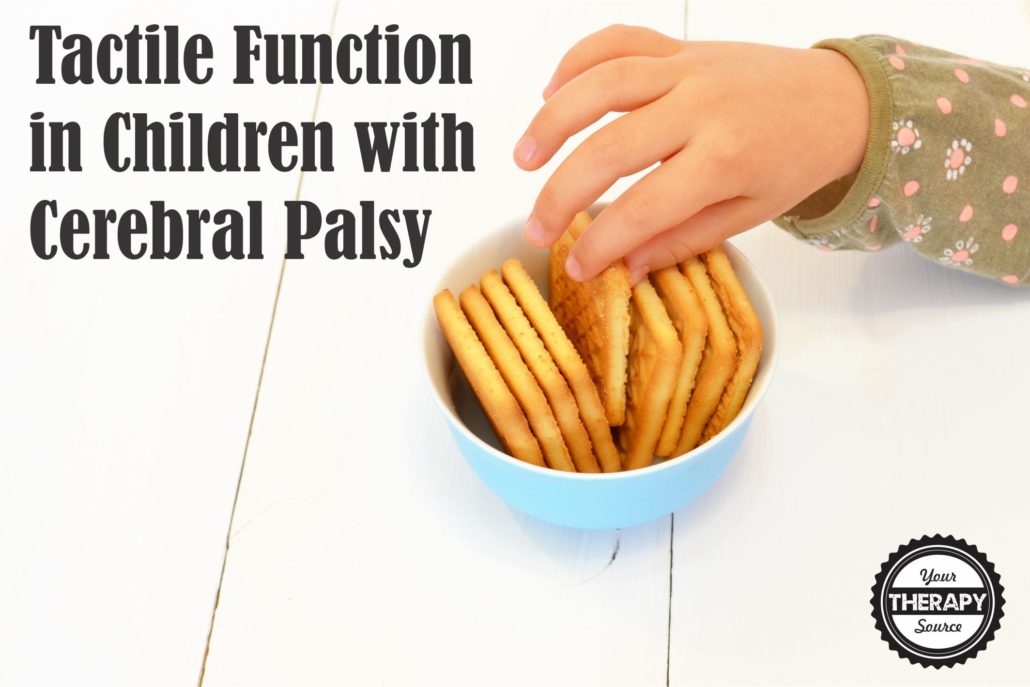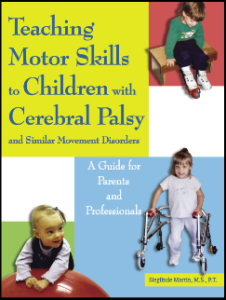Tactile Function in Children with Cerebral Palsy
As pediatric therapists, assessment and treatment of children with cerebral palsy frequently focuses on motor impairments although, children with unilateral cerebral palsy (hemiplegia) are also likely to have sensory impairment. Research indicates that tactile registration for children with hemiplegia is consistently worse with their impaired hand than their unimpaired hand. Both hands of children with hemiplegia performed worse than either hand when compared to typically developing children. Forty percent of children with hemiplegia had tactile registration and perception deficits, 37% had perception deficits only and 23% had no tactile deficit. The larger the tactile registration deficit, the poorer the performance on all tactile perceptual tests. The researchers concluded that tactile dysfunction may contribute to functional impairment and is a possible target for intervention (Auld, 2012).
Here are a few suggestions to encourage tactile registration and perception during therapeutic play activities:
- Provide different textured toys during playtime. For example, verbalize and discuss differences between soft/hard, bumpy/smooth, fluffy/scratchy, etc. If the toys are just smooth plastic, then try and add a sensory component to the toy.
- Add weight to toys to increase input. For example, try stacking boxes with weights in them (ie 1 lb. bag of beans).
- Add to texture during arts and crafts time. For example, add sand to fingerpaints or use shaving cream.
- Focus specifically on tactile perception and registration. For example, the child can close their eyes and rely only on their sense of touch to identify objects. They will not be able to use their sense of vision to determine what the object is and how to hold it.
- Add tactile input to weight bearing activities. For example, when a child is working on weight bearing with an open hand, try performing that skill on different surfaces such as bubble wrap (bumpy), sand paper (rough), dry towel (scratchy), yoga mat (smooth) or cold (gel ice pack). For the bare feet, try walking or balance with on different tactile surfaces such as grass, sand or dirt.
References:
Auld, ML et al. (2012). Tactile function in children with unilateral cerebral palsy compared to typically developing children. Disability & Rehabilitation, 2012, 1–7, Early Online. DOI: 10.3109/09638288.2011.650314
Teaching Motor Skills to Children with Cerebral Palsy and Similar Movement Disorders – A Guide for Parents and Professionals – The ELECTRONIC version of Teaching Motor Skills is a must have reference for all therapists who work with children with cerebral palsy. Whether you are a beginner or experienced therapist you will find the information concise, informative and very helpful to carry out everyday functional tasks including stretching with children with cerebral palsy. The book provides activity suggestions throughout the developmental sequence such as head control, tummy time, sitting, transitions, walking and beyond. There is also great information that reviews additional interventions for children with cerebral palsy such as bracing, surgical and medical management. Find out more.




